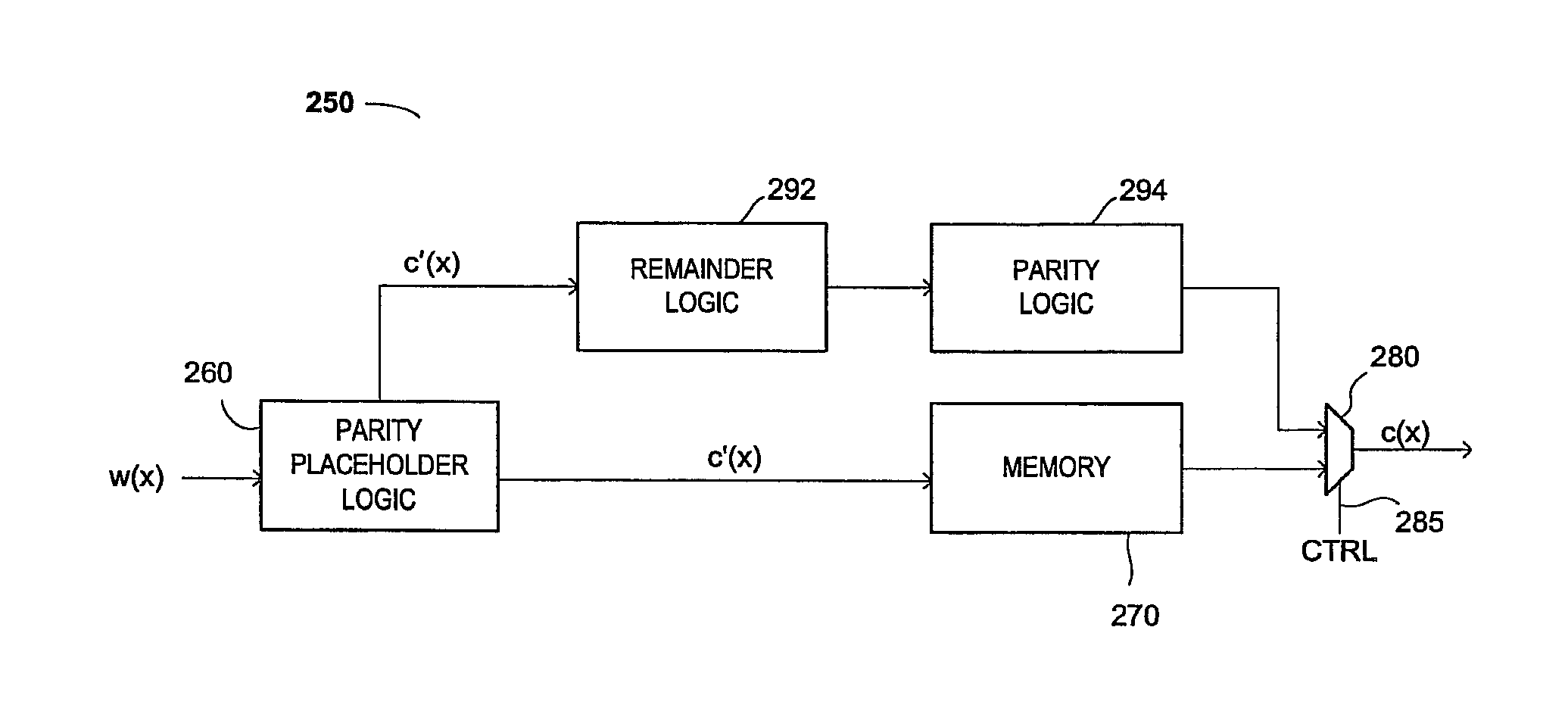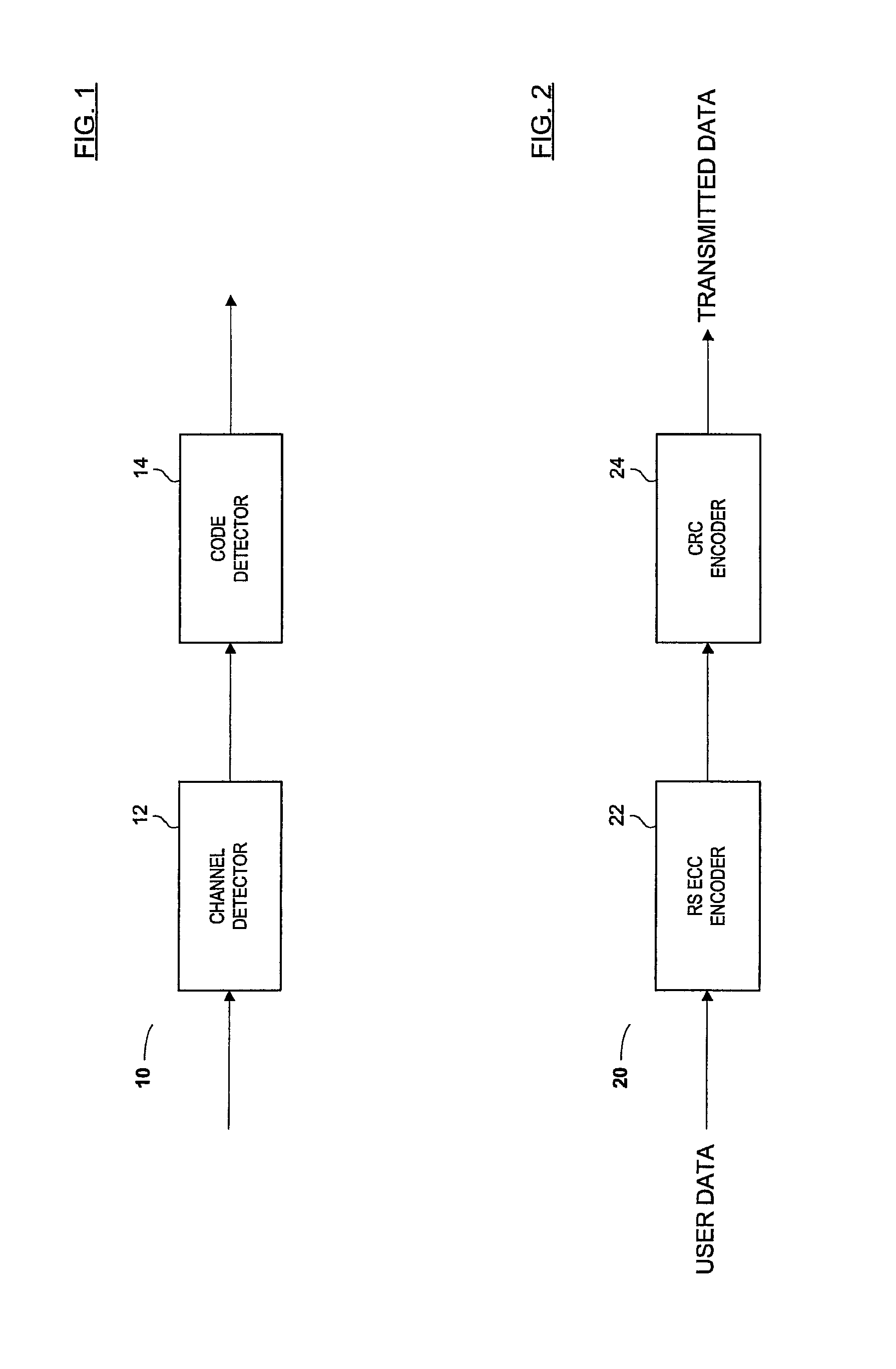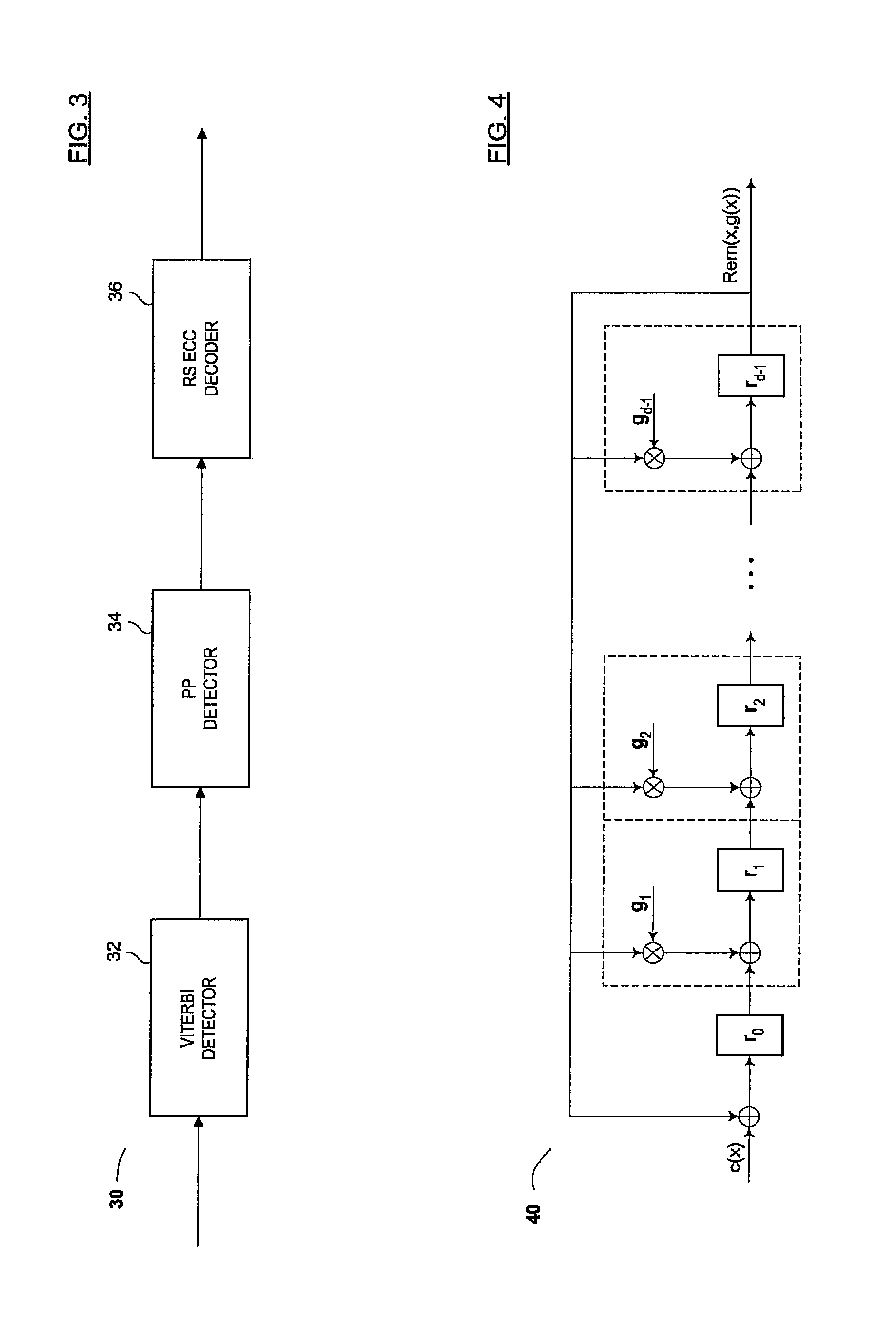Methods and algorithms for joint channel-code decoding of linear block codes
a linear block code and channel-code technology, applied in the field of joint channel-code detectors, can solve the problems of insufficient error correction capability of linear block code, inability to meet the demands of certain applications, and the complexity of the detection device, etc., to achieve the effect of facilitating pp implementation
- Summary
- Abstract
- Description
- Claims
- Application Information
AI Technical Summary
Benefits of technology
Problems solved by technology
Method used
Image
Examples
simple example # 1
Simple Example #1
[0118]Let r(x)=(1,0,0) and L={e1,e2,e3} be the LMLE event list generated by list generator 352. Let R be given by the following matrix:
[0119] [110111001]
Then the augmented matrix is:
[0120] [110111100010]
[0121]Row reduction to solve Rα=r gives:
[0122][110111100010]→[110100110010]→[110100110001]
The left portion (i.e., the first three columns) of the last row is all zeros, but the right portion (i.e., the position in the augmented column of the last row) is one. Therefore, there are no solutions.
Application of the Search Algorithm
simple example # 2
Simple Example #2
[0123]Let r(x)=(1,0,0) and L={e1, e2, e3} be the LMLE event list generated by list generator 352. Let R be given by the following matrix:
[0124] [110111011]
Then the augmented matrix is:
[0125] [110111100110]
[0126]Row reduction to solve Rα=r gives:
[0127][110111100110]→ [110100110110]→[110101100011]→[101101100011]→ [100001010011]
The left portion of the matrix is the identity matrix. As a result, there is a unique solution defined by the right portion (i.e., the last column) of the matrix, (0,1,1).
Application of the Search Algorithm
simple example # 3
Simple Example #3
[0128]Let r(x)=(1,1,0) and L={e1,e2,e3} be the LMLE event list generated by list generator 352. Let R be given by the following matrix:
[0129] [110011101]
Then the augmented matrix is:
[0130] [110101111010]
[0131]Row reduction to solve Rα=r gives:
[0132][110101111010]→[110101110111]→[101001110000]
The reduced matrix has an “all zeros” row (the last row). As a result, α3 is a free variable, and there is one solution, defined in part by the right portion of the matrix, for each value of the free variable. Therefore, when α3=0, the solution is (0,1,0), and when α3=1, the solution is (1,0,1).
[0133]Exemplary Correction Logic
[0134]If the list search algorithm 500 fails to find a solution, then correction logic 338 (FIG. 9) generally performs no error correcting function(s). When multiple solutions are found, correction block can choose a best solution based on the MLDP and / or number of component error events.
[0135]In order to minimize the mis-correction probability, correction ...
PUM
 Login to View More
Login to View More Abstract
Description
Claims
Application Information
 Login to View More
Login to View More - R&D
- Intellectual Property
- Life Sciences
- Materials
- Tech Scout
- Unparalleled Data Quality
- Higher Quality Content
- 60% Fewer Hallucinations
Browse by: Latest US Patents, China's latest patents, Technical Efficacy Thesaurus, Application Domain, Technology Topic, Popular Technical Reports.
© 2025 PatSnap. All rights reserved.Legal|Privacy policy|Modern Slavery Act Transparency Statement|Sitemap|About US| Contact US: help@patsnap.com



